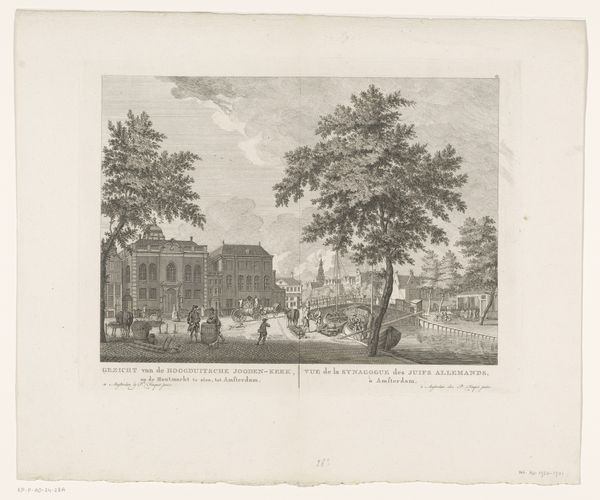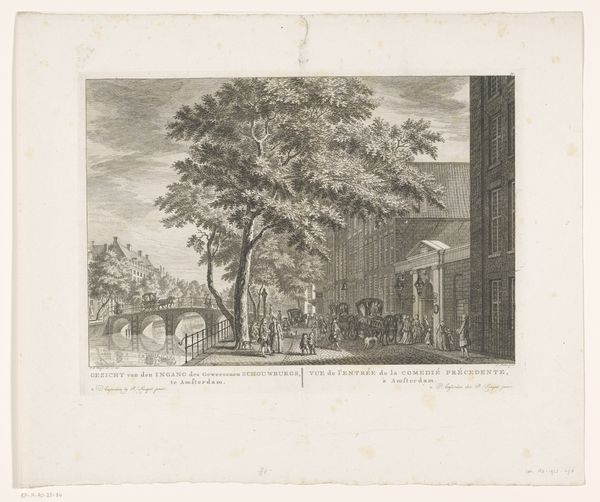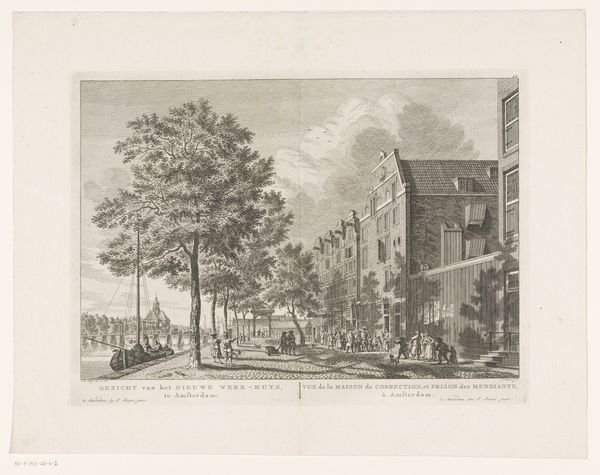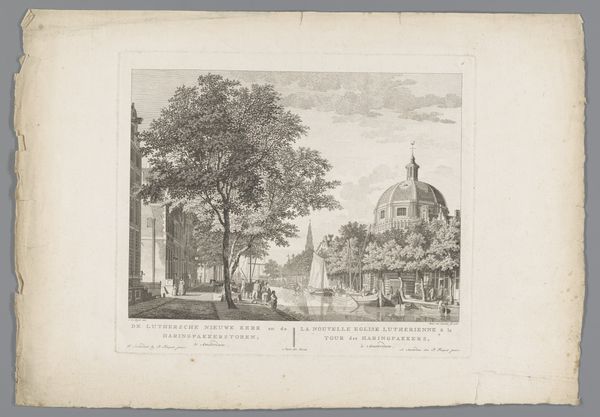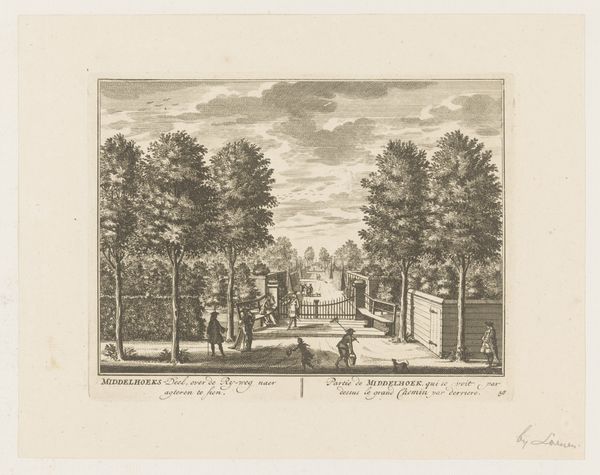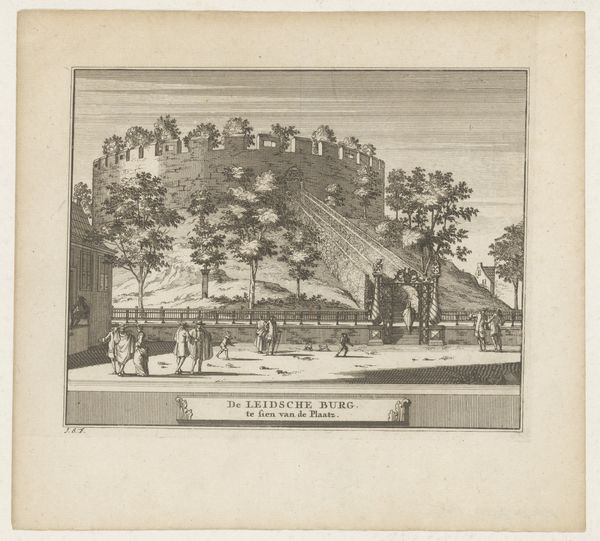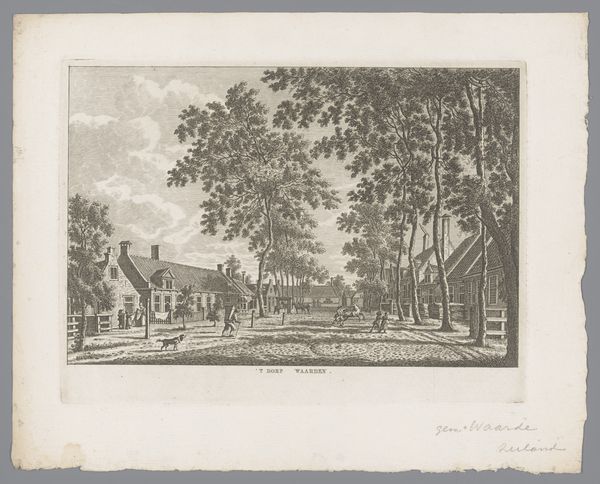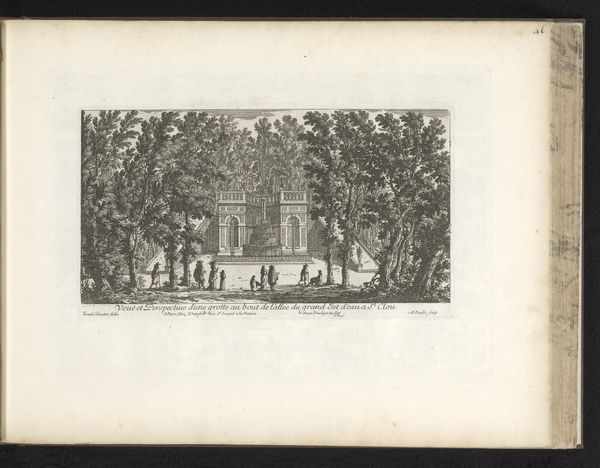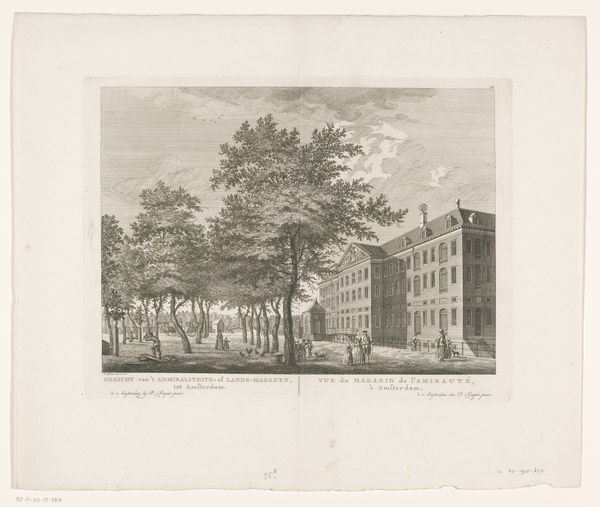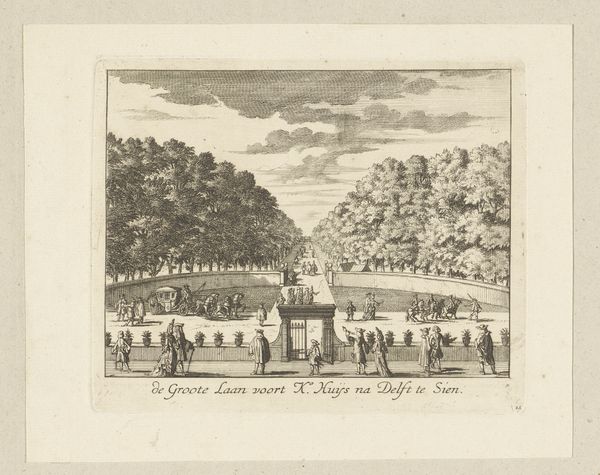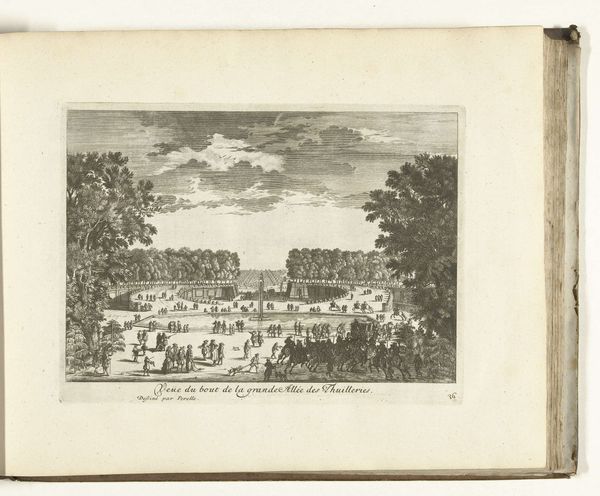
Gezicht op het Athenaeum Illustre te Amsterdam c. 1770 - 1783
0:00
0:00
print, etching, engraving
#
neoclacissism
# print
#
etching
#
landscape
#
cityscape
#
engraving
Dimensions: height 268 mm, width 359 mm
Copyright: Rijks Museum: Open Domain
Curator: This is "View of the Athenaeum Illustre in Amsterdam" by Hermanus Petrus Schouten, an etching and engraving from around 1770 to 1783. It’s currently held in the Rijksmuseum collection. Editor: Immediately striking is the image’s tranquil atmosphere. It's all so orderly, serene even. It makes me wonder about the social undercurrents present at the time this view of Amsterdam’s learned institution was captured. Curator: Yes, observe the use of line and shadow, a beautiful display of tonal variation! Note how the meticulous engravings of the architecture contrast with the delicate depiction of the surrounding nature. The building, the canal, the trees, even the figures, are so deliberately placed, aren't they? Editor: Absolutely, but what strikes me is the apparent dichotomy: the Athenaeum, representing established knowledge and power, positioned so centrally amidst what appears to be a bustling commercial scene along the canal. Were those in power engaging with the societal currents, or remaining aloof? Curator: I am intrigued by the architectural composition. The symmetrical design, reflective of neoclassicism, evokes the Enlightenment values of order and reason. Observe how Schouten employs linear perspective, drawing our eye toward the vanishing point somewhere behind the central structure. Editor: And it begs the question: who had access to that "reason"? Institutions of learning like the Athenaeum historically excluded marginalized groups. Is there something to read in how Schouten includes various social classes within his cityscape, while the imposing structure seems to overshadow them? Curator: An interesting point to consider. However, I would suggest a deeper analysis of the composition’s geometric harmony. The placement of each element serves to create an equilibrium, visually manifesting the period's ideals of balance and proportion. Editor: Indeed, there's so much happening just below the surface, making this seemingly simple city view incredibly complex. The history of access, power, and representation—it's all embedded within the artistic choices. Curator: A fascinating work through which we may reflect on artistic technique and its socio-historical context. Editor: Ultimately, I think it asks us to critically consider not just what we see, but who gets to see, and what stories are being left out.
Comments
No comments
Be the first to comment and join the conversation on the ultimate creative platform.
